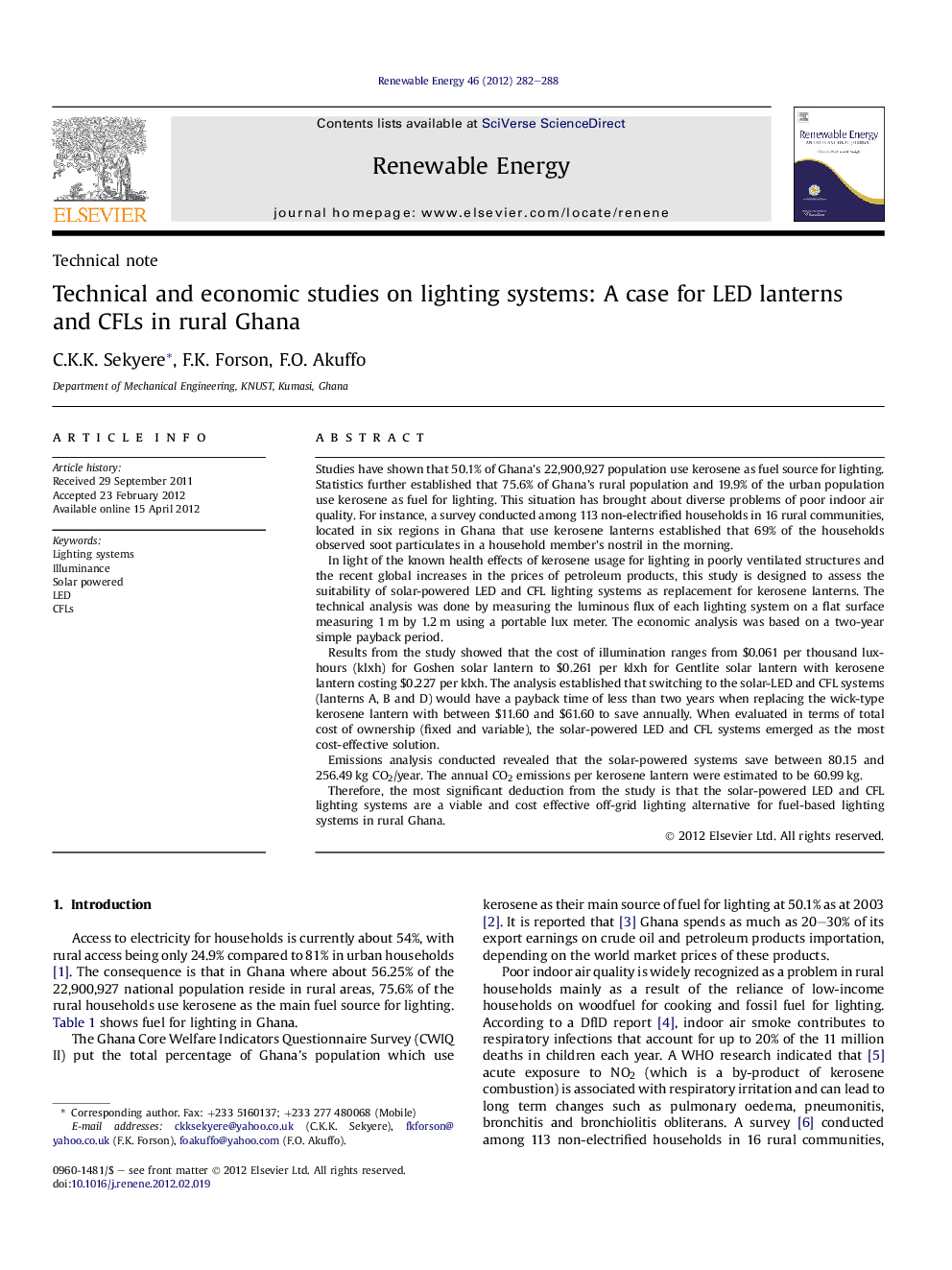| کد مقاله | کد نشریه | سال انتشار | مقاله انگلیسی | نسخه تمام متن |
|---|---|---|---|---|
| 301000 | 512494 | 2012 | 7 صفحه PDF | دانلود رایگان |

Studies have shown that 50.1% of Ghana’s 22,900,927 population use kerosene as fuel source for lighting. Statistics further established that 75.6% of Ghana’s rural population and 19.9% of the urban population use kerosene as fuel for lighting. This situation has brought about diverse problems of poor indoor air quality. For instance, a survey conducted among 113 non-electrified households in 16 rural communities, located in six regions in Ghana that use kerosene lanterns established that 69% of the households observed soot particulates in a household member’s nostril in the morning.In light of the known health effects of kerosene usage for lighting in poorly ventilated structures and the recent global increases in the prices of petroleum products, this study is designed to assess the suitability of solar-powered LED and CFL lighting systems as replacement for kerosene lanterns. The technical analysis was done by measuring the luminous flux of each lighting system on a flat surface measuring 1 m by 1.2 m using a portable lux meter. The economic analysis was based on a two-year simple payback period.Results from the study showed that the cost of illumination ranges from $0.061 per thousand lux-hours (klxh) for Goshen solar lantern to $0.261 per klxh for Gentlite solar lantern with kerosene lantern costing $0.227 per klxh. The analysis established that switching to the solar-LED and CFL systems (lanterns A, B and D) would have a payback time of less than two years when replacing the wick-type kerosene lantern with between $11.60 and $61.60 to save annually. When evaluated in terms of total cost of ownership (fixed and variable), the solar-powered LED and CFL systems emerged as the most cost-effective solution.Emissions analysis conducted revealed that the solar-powered systems save between 80.15 and 256.49 kg CO2/year. The annual CO2 emissions per kerosene lantern were estimated to be 60.99 kg.Therefore, the most significant deduction from the study is that the solar-powered LED and CFL lighting systems are a viable and cost effective off-grid lighting alternative for fuel-based lighting systems in rural Ghana.
► Solar LEDs and CFLs were investigated as alternatives for kerosene lanterns in domestic lighting in Ghana.
► Average illuminance was measured on a flat surface (1 m by 1.2 m) using a portable lux meter.
► The economic analysis was based on a two year simple payback period.
► Solar LED and CFL systems recorded cost of illumination between $0.061 and $0.261
► Solar LED and CFL systems emerged as the most cost-effective solution to flame-based lighting.
Journal: Renewable Energy - Volume 46, October 2012, Pages 282–288